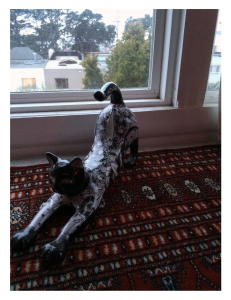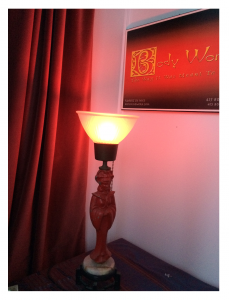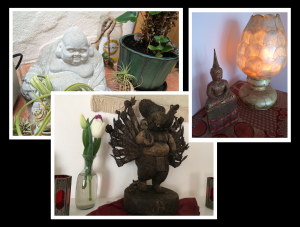 Having worked in a variety of settings as well as receiving lots of bodywork, I would like to briefly explore what makes a good healing environment.
Having worked in a variety of settings as well as receiving lots of bodywork, I would like to briefly explore what makes a good healing environment.
It startles me sometimes how many therapists work in cramped spaces, often even without natural day light.
I never forget the director of a resort responding to me as I was describing my work space.When I told her about the view of the ocean in the distance she curtly responded: “That’s nice for you I guess, the clients have their eyes closed anyway”.
On the opposite end of the spectrum is the noted space clearing expert Karen Kingston who states that when clients enter your space, they ought to feel so good that 80% of the work is already done!
So what transforms a room into a healing sanctuary?
A feeling of spaciousness is important, you want some room to breathe for both of you. This way the client can be observed as they move and it’s easy to do some therapeutic movements with them, the homework.
 A simple and clutter free room, that’s pleasing to the eye, preferably with some day light coming in and good ventilation is ideal.
A simple and clutter free room, that’s pleasing to the eye, preferably with some day light coming in and good ventilation is ideal.
If possible, the room is just used for the healing modality and does not double for other purposes. This brings the power of intention into the space.
After awhile many clients will feel this on some level as soon as they enter.
Something that’s often overlooked, though quite crucial: if the practitioner has a spiritual practice, be it Tai Chi, yoga etc, practice in the room as often as possible. Over time it will imbue the space with power. This way the practice room is not only about “work”.
In that same vein it is important to start viewing the work itself as an extension of the practice, as if they’re one and the same.
On a recent visit to Thailand, I studied with Kam Thye Chow who reminded the students to view our Thai Massage practice as doing yoga. That way when you’re working you’re doing yoga in the yoga room. How nice is that?!
 Finally it’s good to be reminded that in the healing room we draw into powers that are larger then us. Having an altar reminds us of this and gives focus, strength and inspiration.
Finally it’s good to be reminded that in the healing room we draw into powers that are larger then us. Having an altar reminds us of this and gives focus, strength and inspiration.
Sage, cedar or frankincense can be used to smudge and clear the space.
Like the practice, keep the room itself alive, it is never finished or complete. Truly the healing space is like an artist’s palate.
Like the practice it’s alive changing with moods and seasons. It keeps evolving over time.
In closing, I’d love to hear from you about your favorite healing sanctuaries. Better yet, share some images with me!

Love your thoughts on the value and meaning of healing space.
What a great article! All workspaces and creativity spaces should embrace this philosophy. The “product” would be be better each and every time.
Rob – terrific entry. Kevin – beautiful site, wonderfully produced.
Well done Robert